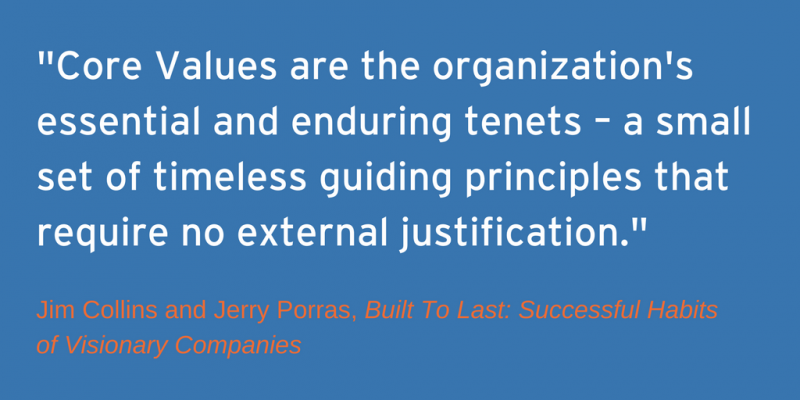Business leaders are the creators of culture, not just strategic decision-makers and systems managers. Culture constitutes the human dimension of organizations; how people interact, communicate, collaborate and operate ethically.
Some aspects of a healthy culture transcend time, place, industry and organizational purpose. Openness serves as one of these hallmarks.
Two questions drive this interest for me:
- What is an open culture?
- How can the practice of gratitude contribute to it?
Think of an organization’s culture as the product of the ideas and relationships of the people connected to it.
Distinguishing characteristics, activities, branded products and services, and specific processes represent that culture. The connecting ideas of purpose or mission, values, vision and the impact given life by the people within the organization also inform its culture. Therefore, culture binds people together as a group, a movement or an organization, and provides them a way to interact and support what matters to them collectively.
Cultures can be open or closed, healthy or dysfunctional, unified or confused, sustainable or dying. The key to creating a healthy, sustainable culture is openness.
How to Recognize an Open Culture
In an open culture, the organization provides low barriers for its people to contribute. As a new person, you can join and immediately make an impact. There is no process requiring you to jumping through hoops to determine whether you are worthy of contributing your talents, ideas, and experience.
I see this type of culture particularly in social organizations, such as a club or religious congregation. In an open culture, people join and start participating and contributing right away. Their contribution is valued and recognized.
A high level of personal initiative taken by members also characterizes an open organizational culture. In my mind, initiative is the beginning of all leadership. Without initiative, there is no leadership, only passive followership.
In a closed culture, the initiative is reserved for the authority figures. They decide what the group does and doesn’t do. This high-control environment means that personal initiative is resisted and those who may be more independent, creative and innovative in their attitudes and behaviors are discouraged or punished for being so.
In an open culture, people recognize that they have the opportunity and responsibility to create new and better ways of realizing the impact of their organization. So, they take personal initiative to make a difference that matters and management empower them.
A third characteristic is that openness creates a higher level of adaptability. In a closed culture, the mindset becomes defensive and resistant to change. Its members assume that culture is fixed and remains the same over time. Instead, what is fixed are the organization’s values. Values drive culture and the expression of those values can change over time. But, the values don’t.
In their book Built To Last: Successful Habits of Visionary Companies, authors Jim Collins and Jerry Porras make a distinction between core values and cultural practices:

In their model, cultural practices are those practices that have replaced the core values as the drivers of the company. These practices have lost their connection to the core values; as a result, the company becomes closed to opportunities presented through change.
In an open culture, values matter.
You adapt to changes that occur in the landscape of your business. Your mission or purpose can change. Your vision can change. Your understanding of the impact that you want to have can change. What guides you through change are your values.
In an open culture, people find low barriers to contributing, the organization welcomes the personal initiative to make a difference that matters, and the company adapts more easily to change by being rooted in its values.
The challenge to creating an open culture is implementation. It is one thing to have well-defined connecting ideas; it is another to know how to act upon them within the structure of the organization.
What I’ve discovered is that the practice of gratitude is a set of strategic practices that support an open culture.
The Five Actions of Gratitude as Openness Strategy
Five actions empower an outreach of openness to others. They are not protective, defensive, exclusionary or elitist. These five actions are open, grateful, giving, welcoming, respectful and creative.
The Action to Say Thanks appreciates the actions and impact of another person. It recognizes another person or group’s contribution to your life and work. It is also a type of self-awareness that sees the beneficial place of others in our life.
The Action to Give Back acknowledges that I want to reciprocate some measure of the goodness in service that I’ve received from persons, groups or communities. This interchange is not a payback of a debt owed, except as a debt of gratitude and an act of thankful contribution.
Imagine the Action to Give Back was the culture of your office right now. What would it look like? Perhaps you’d see a higher level of not just contribution, but sharing of work and responsibilities so that customers, internal clients, vendors, and other stakeholders are better served and served well.
The Action to Make Welcome creates an open environment for people to take initiative to contribute meaningfully and have an impact.
With openness comes personal responsibility to make the workplace a better place to work, to innovate ways to better serve customers, and to resolve problems and issues before they grow into a crisis. This practice is the key action for creating an open culture. It requires a specific kind of leadership that allows others to lead alongside one another. It is a culture of shared responsibility and opportunity.
The Action to Honor Others seeks to treat people with dignity, respect, and kindness. These values characterize the best attributes of relationships and form the basis for a culture of gratitude and trust.
These values are rarely evident with any degree of strength in most businesses and organizations. Why? My guess is that these practices require effort and commitment. They do not easily translate to a company’s bottom-line. These values are not typically qualifications for executive leadership. They only create efficiency when the culture has reached a level of maturity. As noted above, an open culture produces the adaptability essential for sustainable growth, especially today in which the rapid pace of change is an ever-present part of the business environment.
Action to Create Goodness invites personal initiative to make a difference that matters, the outcome of an open culture.
Creativity is born in the initiative of a person. It rises from their values, a sense of purpose, the questions that lead them to explore new ways of doing things, and finally to make a difference that matters.
Goodness is the impact of an open culture. The ancient Greeks understood goodness as the way to understand one’s fulfillment of purpose and the path to achieving wholeness, completeness, integrity, and success. The fulfillment of one’s potential resides in the connecting ideas of purpose, mission, values, vision, and impact. An organization’s people come to measure their culture and employment experience by work that is personally meaningful, socially fulfilling and makes a difference that matters.
Goodness is the product of personal initiative, which flourishes within an open
Creating an Open Culture of Gratitude
These practices are not just good ideas, which they are. They are not just good things to do, which they are. More importantly, the Five Actions of Gratitude serve as a systemic strategy for sustaining an effective, functioning organization.
To develop a system of gratitude, the organization’s current system must be changed or replaced. The changes required may be small or large, but turning your organization into an open culture of gratitude creates an environment of shared leadership that attracts the best talent.
Leading in an Open Culture of Gratitude
People tell me that gratitude is a sweet, grandmotherly sentiment that has little relevance to leading organizations. Obviously, they didn’t know my grandmother. As I’ve outlined here, to practice gratitude requires personal maturity, inner confidence, and a willingness to trust. Instead of being trite, creating an open culture of gratitude is the most transformative, courageous act an executive leader can do.
To transform an organization’s culture from a closed one to an open one depends on the person at the top changing. It is a simple change, but a very difficult one – difficult because it is not tactical, but personal.
For an open culture of gratitude to grow, you have to decide that you are not the go-to-guy for everything. You can’t make every decision, resolve every issue, be the king or queen on the throne, and be the one who dictates the course of your business or organization. You can’t even be the expert at creating an open culture of gratitude.
You have to realize that you are a facilitator of talent. The value of that talent is only fully realized when each person is free to exercise personal initiative for the greater good of the customer, other employees and stakeholders, the business and the community.
An open culture transition is a change of mindset, of attitude and behavior. This transformation is the supreme test of the character of the leader. Can you let go and let you people lead? If you can, then you can create an open culture of gratitude. If not, then you will be following those who can do it.
Openness is the key, and gratitude is the strategy that elevates openness to a practical, functional level.
Be grateful, giving, welcoming, honoring and creative, and you’ll find a new depth of impact emerging from the parts of your organization that have never produced to their potential. It all starts with being open and grateful.



